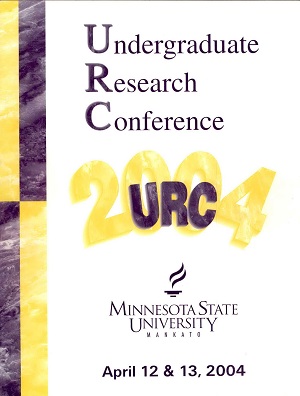Cultural-Priming: A Method which Deliberately Activate an Eastern or Western Mode of Thought
Location
CSU 284ABC
Start Date
13-4-2004 2:45 PM
End Date
13-4-2004 4:30 PM
Student's Major
Communication Studies
Student's College
Arts and Humanities
Mentor's Name
Vinai Norasakkunkit
Mentor's Department
Psychology
Mentor's College
Social and Behavioral Sciences
Description
This cross-cultural psychological research explores how culturally patterned dominant modes of thought can be suppressed to activate an alternative mode of thought through a procedure called cultural priming. Specifically, we attempt to deliberately activate an Eastern or Western mode of thought among American and Japanese participants. Previous priming procedures activating these cultural modes of thought have shown to be effective among English speaking American populations but not effective among non-English speaking Japanese population. This lack of procedure effectiveness when applied cross-culturally may be due to the nature of the priming stimuli, which seems to rely heavily on verbal processing.
The purpose of this study is to cross-culturally standardized priming stimuli between the United States and Japan by having the procedure capitalize more on visual processing (i.e. the use of visual stimuli to activate relevant constructs). Cross-culturally standardized visual primes will be created based on actual social situations constructed by Japanese and American participants. The theory and method behind this procedure and the work in progress will be presented.
Cultural-Priming: A Method which Deliberately Activate an Eastern or Western Mode of Thought
CSU 284ABC
This cross-cultural psychological research explores how culturally patterned dominant modes of thought can be suppressed to activate an alternative mode of thought through a procedure called cultural priming. Specifically, we attempt to deliberately activate an Eastern or Western mode of thought among American and Japanese participants. Previous priming procedures activating these cultural modes of thought have shown to be effective among English speaking American populations but not effective among non-English speaking Japanese population. This lack of procedure effectiveness when applied cross-culturally may be due to the nature of the priming stimuli, which seems to rely heavily on verbal processing.
The purpose of this study is to cross-culturally standardized priming stimuli between the United States and Japan by having the procedure capitalize more on visual processing (i.e. the use of visual stimuli to activate relevant constructs). Cross-culturally standardized visual primes will be created based on actual social situations constructed by Japanese and American participants. The theory and method behind this procedure and the work in progress will be presented.



